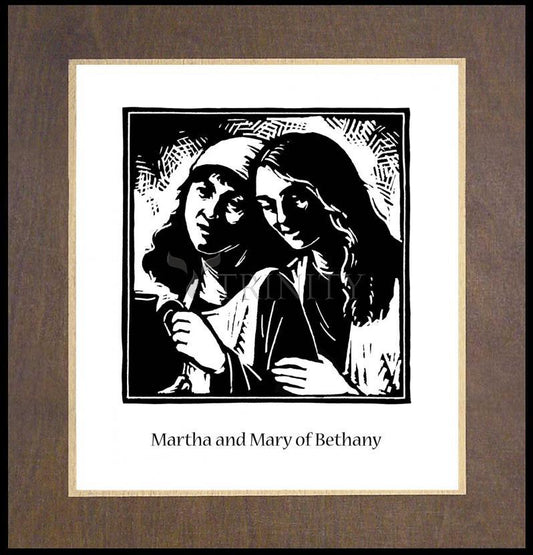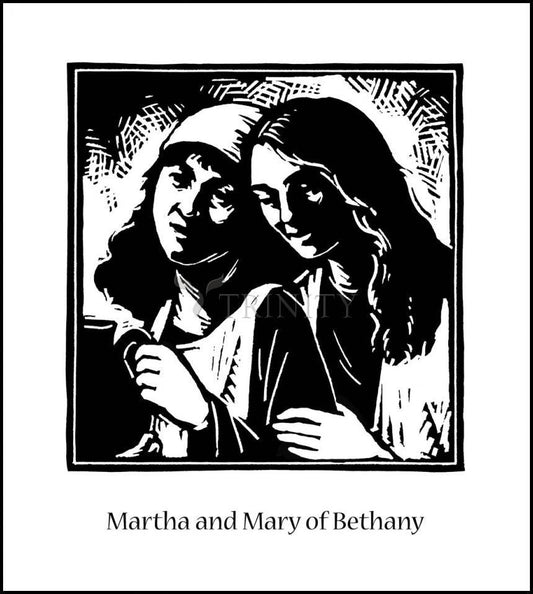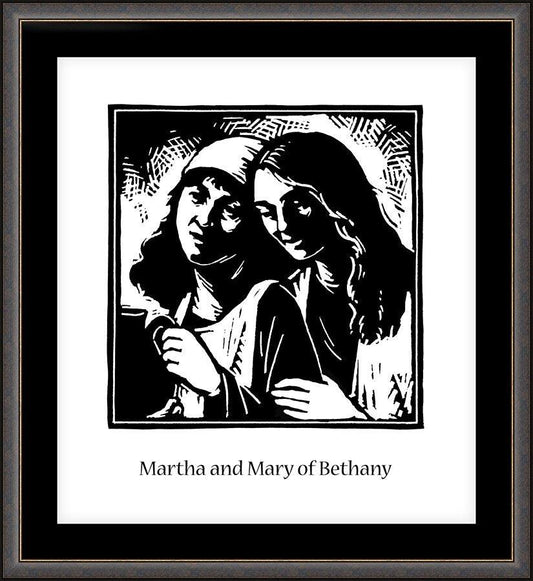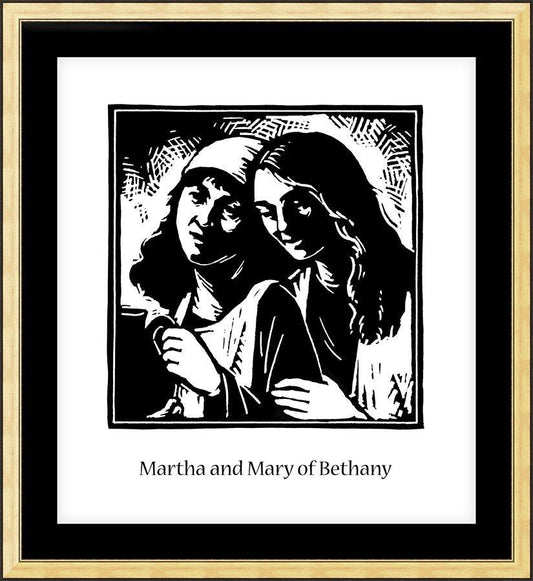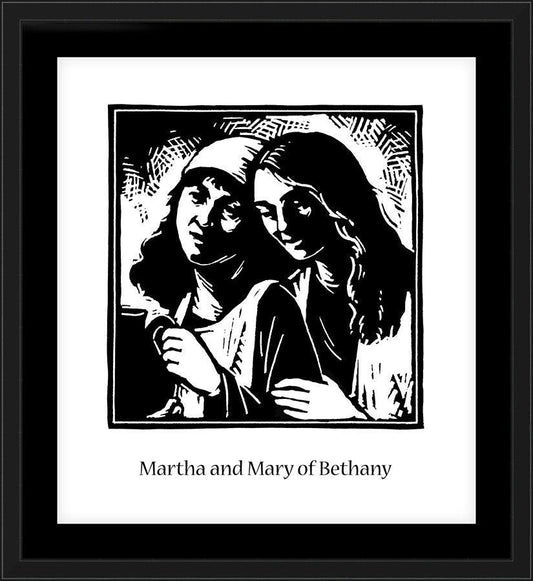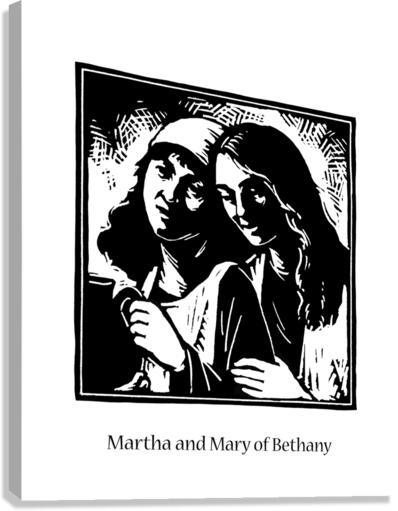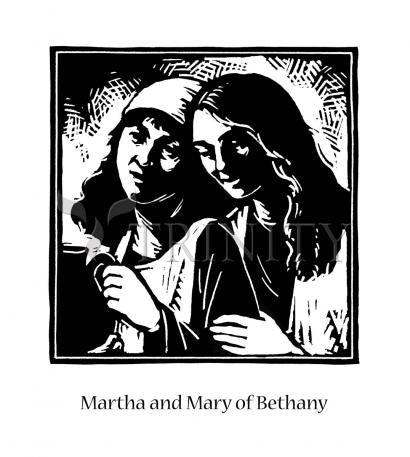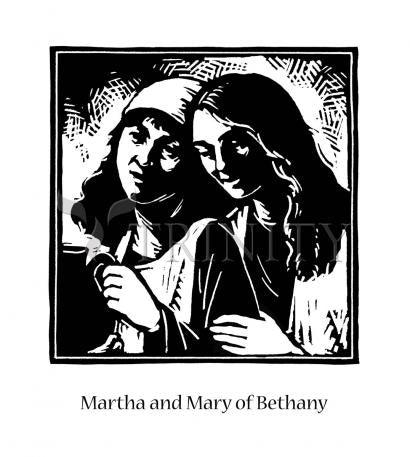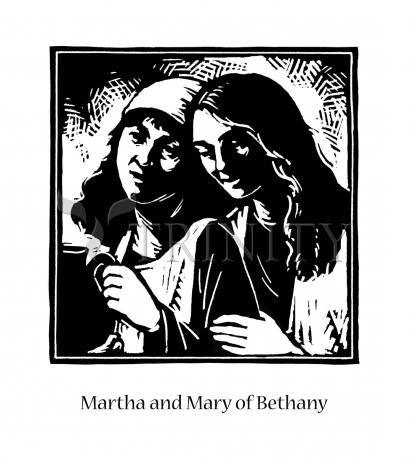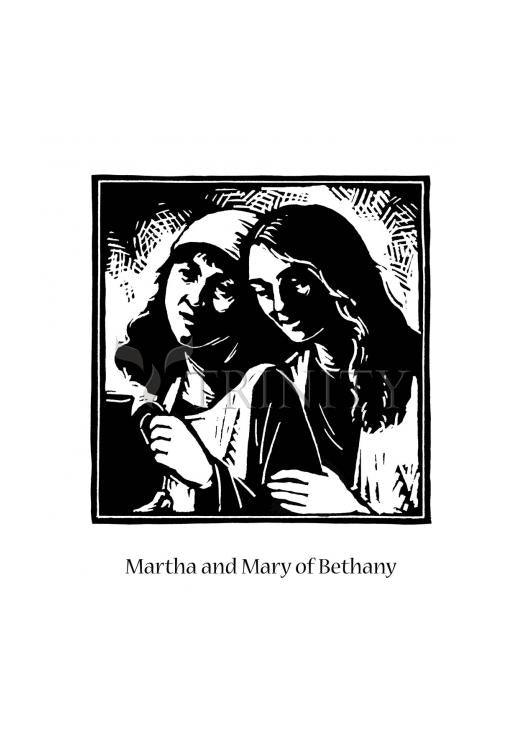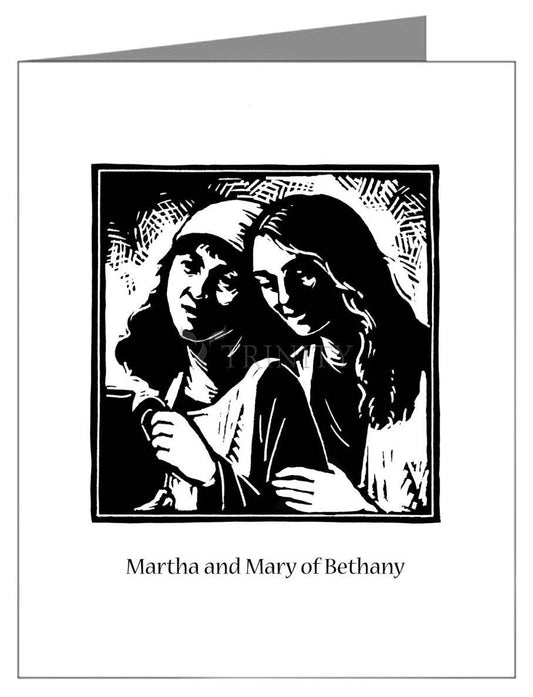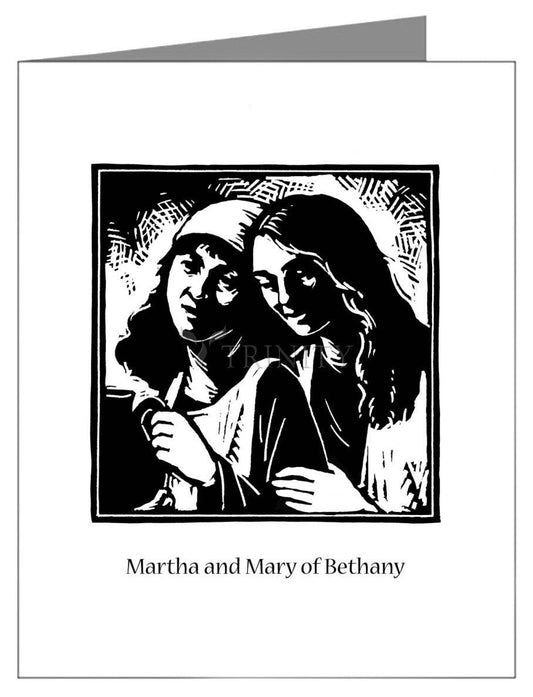Martha is mentioned only in Luke 10:38-42; and John 11, 12, sqq. The Aramaic form occurs in a Nabatfan inscription found at Puteoli, and now in the Naples Museum. It is dated A.D. 5 (Corpus Inscr. Semit., 158); also in a Palmyrene inscription, where the Greek translation has the form Marthein, A.D. 179.
Mary, Martha, and Lazarus are represented by St. John as living at Bethania, but St. Luke would seem to imply that they were, at least at one time, living in Galilee. He does not mention the name of the town, but it may have been Magdala, and we should thus, supposing Mary of Bethania and Mary Magdalene to be the same person. The words of St. John (11:1) seem to imply a change of residence for the family. It is possible, too, that St. Luke has displaced the incident referred to in Chapter 10.
The likeness between the pictures of Martha presented by Luke and John is very remarkable. The familiar intercourse between the Savior of the world and the humble family which St. Luke depicts is dwelt on by St. John when he tells us that "Jesus loved Martha, and her sister Mary, and Lazarus" (11:5). Again the picture of Martha's anxiety (John 11:20-21, 39) accords with the picture of her who was "busy about much serving" (Luke 10:40); so also in John 12:2: "They made him a supper there: and Martha served."
But St. John has given us a glimpse of the other and deeper side of her character when he depicts her growing faith in Christ's Divinity (11:20-27), a faith which was the occasion of the words: "I am the resurrection and the life." The Evangelist has beautifully indicated the change that came over Martha after that interview: "When she had said these things, she went and called her sister Mary secretly, saying: The Master is come, and calleth for thee."
Difficulties have been raised about the last supper at Bethania. St. John seems to put it six days before the Pasch, and, so some conclude, in the house of Martha; while the Synoptic account puts it two days before the Pasch, and in the house of Simon the Leper. We need not try to avoid this difficulty by asserting that there were two suppers; for St. John does not say that the supper took place six days before, but only that Christ arrived in Bethania six days before the Pasch; nor does he say that it was in the house of Martha. We are surely justified in arguing that, since St. Matthew and St. Mark place the scene in the house of Simon, St. John must be understood to say the same; it remains to be proved that Martha could not "serve" in Simon's house.
Died: c.80
Reading:
Martha and Mary were sisters, related not only by blood but also by religious aspirations. They stayed close to our Lord and both served him harmoniously when he was among them. Martha welcomed him as travelers are welcomed. But in her case, the maidservant received her Lord, the creature her Creator, to serve him bodily food while she was to be fed by the Spirit.
No one of you should say, "Blessed are they who have deserved to receive Christ into their homes!" Do not grieve or complain that you were born in a time when you can no longer see God in the flesh. He did not in fact take this privilege from you. As he says, "Whatever you have done to the least of my brothers, you did to me."
"Excerpts from a sermon by Saint Augustine



